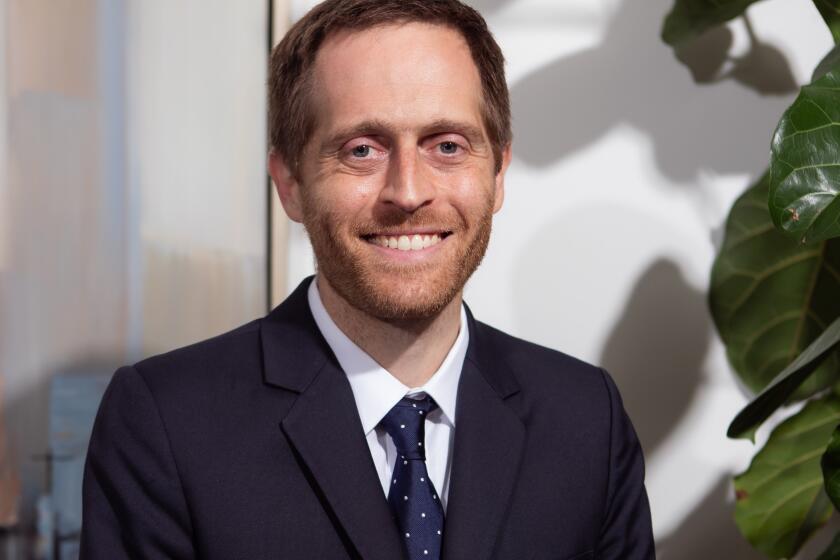Valley Rail: A Link That Also Divides : Get Real: Go Underground
- Share via
T wo major decisions about an east-west rail mass transit line in the San Fernando Valley lie before the Metropolitan Transportation Authority: how to pay for it and where to put it.
Complicated by the recession, the funding is in doubt.
Supporters of the two routes under consideration state their views on this page. One proposal is for an elevated line down the middle of the Ventura Freeway. The other is for a mostly underground line generally following Chandler and Burbank boulevards across the Valley. Either would start at an intersection with the Metro Red Line subway from downtown.
The routes are the subject of a formal study by private consultants, to be done by mid-1994.
*
Instead of common sense and sound economics, the debate over the Valley rail line route has been characterized by uninformed and emotional arguments and a lack of understanding of the problems of residents along the Ventura Freeway.
First, let’s stop using the emotionally appealing term monorail. What is actually being considered is a heavy rail elevated train, possibly an extension of the Metro Red Line subway. Monorail and other futuristic technologies are unproven and fraught with problems. A monorail may work for an amusement park, but not as the backbone of a major transportation system. Magnetic levitation systems require a huge amount of electrical energy, exposing riders to high magnetic fields, and are only a gleam in the designers’ eyes.
An objective look at the competing proposals clearly shows that the Burbank/Chandler route is the better choice. It is supported by almost every elected official, business leader and homeowner organization in the Valley. If rail is to be built, it belongs along Burbank/Chandler.
Dollars and cents are a major argument against an elevated train. Note that so far no builders are willing to sign a contract for it without a promise that taxpayers will cover any unexpected losses.
Passenger inconvenience argues against the freeway route. Projected travel times to downtown as foreseen in the Metropolitan Transportation Authority’s environmental impact report are longer than on the subway extension--60 versus 51 minutes from Warner Center, for example.
*
A Ventura Freeway elevated train could require passengers to change trains at the Universal City subway station. Passengers would have to get out of a train, walk to the subway station, ride down an escalator and wait for the next train. The Burbank/Chandler route would require no change of trains.
An elevated train on the freeway is the epitome of bad planning. It is not consistent with the city’s general plan, which says transit lines linking densely developed urban centers should be within walking distance of the stations.
A freeway train would add traffic to already congested intersections near the freeway as traffic converged on park-and-ride lots. Remember, the whole idea of rapid transit is to cut down on traffic.
And let’s not be misled about air pollution claims. Placing rail on the freewaywould site stations in congested areas. The increased auto traffic, jams and delays would create more air pollution, not less.
A Burbank/Chandler train would revitalize downtown Van Nuys and North Hollywood. A freeway train would have no such effect.
An elevated train would create more environmental and economic damage than a subway, cut-and-cover or at-grade line on Burbank-Chandler. A freeway train line would displace more businesses, jobs and homes (98 businesses, 1,200 jobs and 11 houses) than the Burbank/Chandler route (55 businesses, 425 jobs, 0 houses), according to the EIR.
*
An elevated train would be visually intrusive, with aerial structures looming over the back yards of adjoining single family homes, apartment buildings and businesses. Every four to six minutes, passengers would peer into back yards and bedroom windows. This may be a way of life in the East, but it is a downgrading of lifestyle for the Valley.
And there is the construction nightmare. Freeway lanes would be closed during nights and weekends, causing massive jams. Heavy equipment would slow traffic, and it would be a gawker’s delight. Night work would mean noise, light, glare and vibration for the unfortunate residents seeking a few hours’ sleep.
Ridership projections are 7,900 a day lower for the freeway than Burbank/Chandler--45,900 compared with 53,800--the EIR says.
At the official level, a freeway route needs: 1. State and federal OKs to use the median. 2. Construction guidelines from the state Public Utilities Commission. 3. Environmental clearance to use federal land in the Sepulveda Basin for stations and a rail yard. 4. Moving of fire stations in the basin to make way for a maintenance yard. Burbank/Chandler faces none of these hurdles.
Safety and earthquakes present many problems. The Ventura Freeway already has reduced medians and limited shoulder width. There is not enough space to build rail down the median safely. Motor vehicles would travel at high speed on inside lanes only 10 inches from support columns.
Trains would be subject to severe damage during earthquakes. It is not safe to build huge train stations 70 feet high on slender steel columns. Top-heavy structures are prone to collapse, as happened on an Oakland freeway.
The Burbank/Chandler route is already owned by MTA. It is a superior location, has greater convenience, shorter travel times, greater ridership and capacity, reduced traffic impacts, less visual impact, less displacement of homes and businesses and fewer procedural hurdles. Its impact on Van Nuys and North Hollywood make it the wiser economic investment.
It’s the clear choice.
More to Read
Sign up for Essential California
The most important California stories and recommendations in your inbox every morning.
You may occasionally receive promotional content from the Los Angeles Times.













